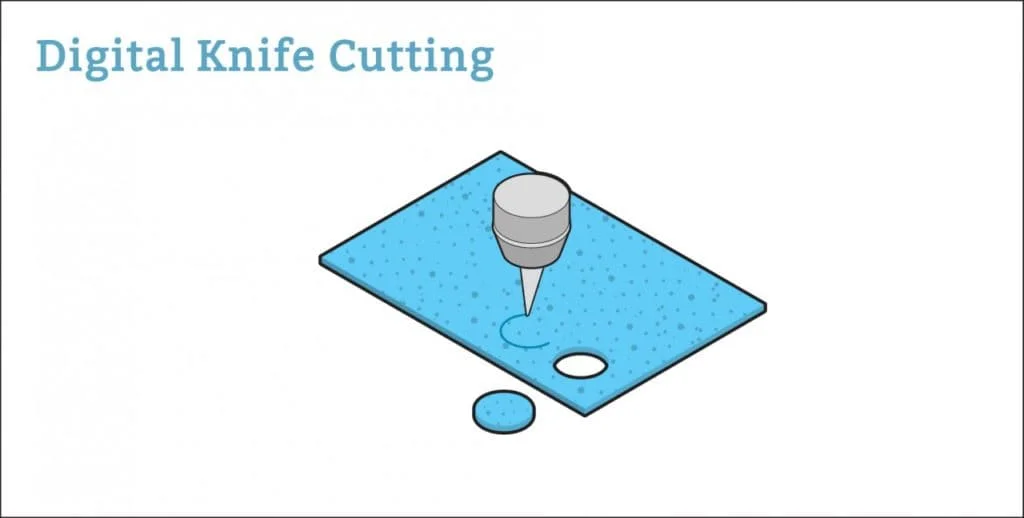Imagine wanting to cut shapes from thin sheets of foam. You’d probably reach for an X-Acto knife. A very sharp thin blade means it cuts readily while being easy to maneuver. That’s why it’s often the first choice for cutting materials like card, plastics, and even leather.
The digital knife is the industrial version of the trusty X-Acto. Computer control brings accuracy and repeatability, so every piece comes off the machine exactly as designed.
Operating principles
Sheet material goes on a large flat bed. A gantry or bridge spans the sheet and carries the knife holder. One motor moves the holder back and forth along the gantry while a second moves the gantry over the sheet. A third motor inside the knife holder provides rotation, turning the knife so the blade is always facing in the direction of movement.
All three motors are under computer control, with their movements synchronized to drive the knife through the sheet material and cut out the shape needed. The path taken by the knife comes directly from a CAD file of the part. With no special tooling needed, it’s possible to design and cut out a shape in just minutes.
Reciprocating motion
Anyone who’s ever used an X-Acto knife knows it takes some effort to actually make a cut. The material needs holding still while the knife is pulled through, which isn’t the case with the digital knife machine. Instead, the knife oscillates up and down. The movement is only over a fraction of an inch and happens too fast to see. It’s really not much more than a vibration but it has the effect of pushing the material down as the knife cuts. That’s why foam or other material being cut doesn’t need clamping in place.
Why digital knife cutting?
Many people know flat bed die cutting as the way to produce complex shapes from sheet material. It’s a very fast and repeatable method, but needs a crucial piece of tooling; the steel rule die. Making these dies adds a step between designing the part or shape and having it come off the machine. It also means a little set up time on the machine.
The digital knife cuts slower than the flat bed die cutter, but there’s no waiting while the die is made, tested, modified and tested again, and no set up on the machine. For the customer in a hurry the digital knife gets them their pieces quicker, although for larger quantities die cutting usually works out cheaper per piece.
Benefits of digital knife cutting
- Cut complex shapes from sheet material.
- Tight radii, smooth radii, and even sharp corners are possible.
- Smooth edges with no steps or jagged edges in curved surfaces.
- Good accuracy and repeatability (little piece-to-piece variation.)
- No tooling, so no up-front costs or extended lead times.
Merryweather capabilities
A bed of 60″ by 120″ handles large foam sheets, and “daylight,” (the space between the bed and the gantry,) is enough that several sheets can be stacked and cut together, saving time and money. “Nesting” software works out how to get the most pieces out of a sheet, or alternatively the machine can produce one very large shape. Pockets are easily cut by lifting the knife over the material to where it’s needed before resuming cutting. Programming direct from CAD means the machine is as suitable for producing one-offs as high volume orders.
Tooling-free
When there’s no time or money to make a steel rule die, digital knife cutting is the way to go. Programmed directly from the CAD file, it’s a fast, accurate and repeatable way of cutting complex shapes from thin sheets of material.


